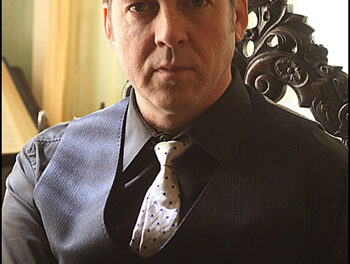Violin Lullabies; Rachel Barton Pine, violin (“ex-Soldat” Guarneri del Gesu, 1742), Matthew Hagle, piano (Steinway); 25 tracks, each by a different composer, including Johannes Brahms, Manuel de Falla, Gabriel Fauré, George Gershwin, Edvard Grieg, Maurice Ravel, Ottorino Respighi, Franz Schubert, Robert Schumann, Richard Strauss, Igor Stravinsky, Eugène Ysaÿe, some transcribed (mostly by other composers) from other forms for this duo; Çedille, © 2013, TT 79:15, $16.
We generally think of lullabies as songs with words, but not necessarily poetic texts, that one sings to get a baby to fall asleep. They do, however, also exist in instrumental format, including for piano: Frédéric Chopin’s famous Berceuse, Op. 57, for example. They also take the form of an art song or lieder, such as Johannes Brahms’ “Wiegenlied,” Op. 49/4, commonly known as ‘Brahms’ Lullaby,’ with which the program opens, and Schubert’s “Wiegenlied,” Op. 98/2, D. 498. Several, like Fauré’s Berceuse, Op. 16, and Ysaÿe’s Rêve d’enfant, were written for violin and piano. Respighi’s was originally written for string ensemble, and then arranged by him for this duo and published as the first of his 1915 Sei Pezzi; Sibelius’ was the last of his Six Pieces for the same duo composed in 1917, and Lucien Durosoir’s Berceuse comes from his 1920 Cinq Aquaralles (Five Watercolors) for violin and piano. Stravinsky’s comes, believe it or not, from his Oiseau de feu (Firebird), a ballet, and Gershwin’s from his Porgy and Bess, as it was arranged by Igor Frolov for/in a Concert Fantasia on the opera’s themes. Several are by composers that you’ve likely never heard of, such as Durosoir, Mikhail Antsev, Vladimir Rebikov, and Camillo Sivori, or that are very unfamiliar, like Amy Beach, Rebecca Clarke, and Pauline Viardot-Garcia – as you can see, at least a few were actually written by women. Even Alan Hovhaness wrote one, entitled Oror, that shows his interest in Eastern/Oriental cultures. Five receive here their world première recordings.
Long before the birth of Rachel Barton Pine’s first child, daughter Sylvia, who with Pine’s mother is the co-dedicatee of this album, Pine had noticed that among the many compilation CDs and scorebooks of various genres, there were none devoted to the lullaby, and considered doing something about that. The birth in 2012 inspired her to move forward with the project, and what a wonderful project it has turned out to be. In her 2-page personal note in the accompanying booklet, she reveals that she has gathered over 150 different ones for the violin. In addition to the 25 tracks, 3 others are available as free downloads on iTunes – the booklet gives notes for them – and a book of scores for violin students with an accompanying CD that provides Hagle’s piano accompaniment alone will soon be published by Carl Fischer Music.
If you think that it must be monotonous to listen to such works for over an hour straight, think again. While the rhythm is pretty much always the same, the tempos and the melodies are not, and range widely in the sampling represented, one sixth of her treasure trove; there is even one with a Scottish lilt, by a non-Scottish composer, Ludwig Schwab (1880-1943), that uses an unidentified authentic-sounding tune – think of all those songs by Haydn and Beethoven (among others in the early 19th century) that use Scottish melodies. There is also a great deal of variety in the performance styles of the works, and Pine varies her magnificent and masterful playing style to suit each individual piece. About half of them call for mutes; Pine borrowed three from a collector, each of which produces a different timbre, that she classifies as “warm,” “delicate,” and “mysterious,” and creates a different aura for the music. None of the pieces are bright in the way we think of virtuoso violin playing being, but neither are they dull and uninteresting.
The booklet cover features a photo of Sylvia at age 2 weeks cradled in a pair of arms; a different closer-up one graces the inside of the tray card whose outside lists the composers, titles, and timings. The track listings with sources and arranger information when applicable and timings – the longest is 6:18, the shortest 1:34, but most lie in the 2.5-3.5-minute range – occupy pages 2-3, with the credits on page 4. (Çedille’s founder, James Ginsburg, was the producer; Bill Maylone the engineer, and the sound is superb.) Pine’s note is on pages 5-6, and the succinct but very informative notes for each composer and work by Pamela Blevins, co-founder of the Maud Powell Society for Music and Education and editor of its free online magazine Signature, Women in Music (Powell was the first American woman violinist to become famous and have a major career.) fill pages 7-24, with Pine’s bio on pages 25-26, and Hagle’s on page 27. The back cover shows five of Pine’s other Çedille recordings including a tribute to Powell.
While lullabies originated in a time lost to memory, springing from an attempt to lull babies to sleep, this CD will not have that effect on you, but it will certainly surprise you with its amazing and beautiful variety and bring you much pleasure with its fine performances to which you will not tire of listening.
Editor’s Note: The violinist opened the 2010-11 season for the Brevard Philharmonic – click here – and will be performing in Raleigh in the 2013-14 season – details pending.











